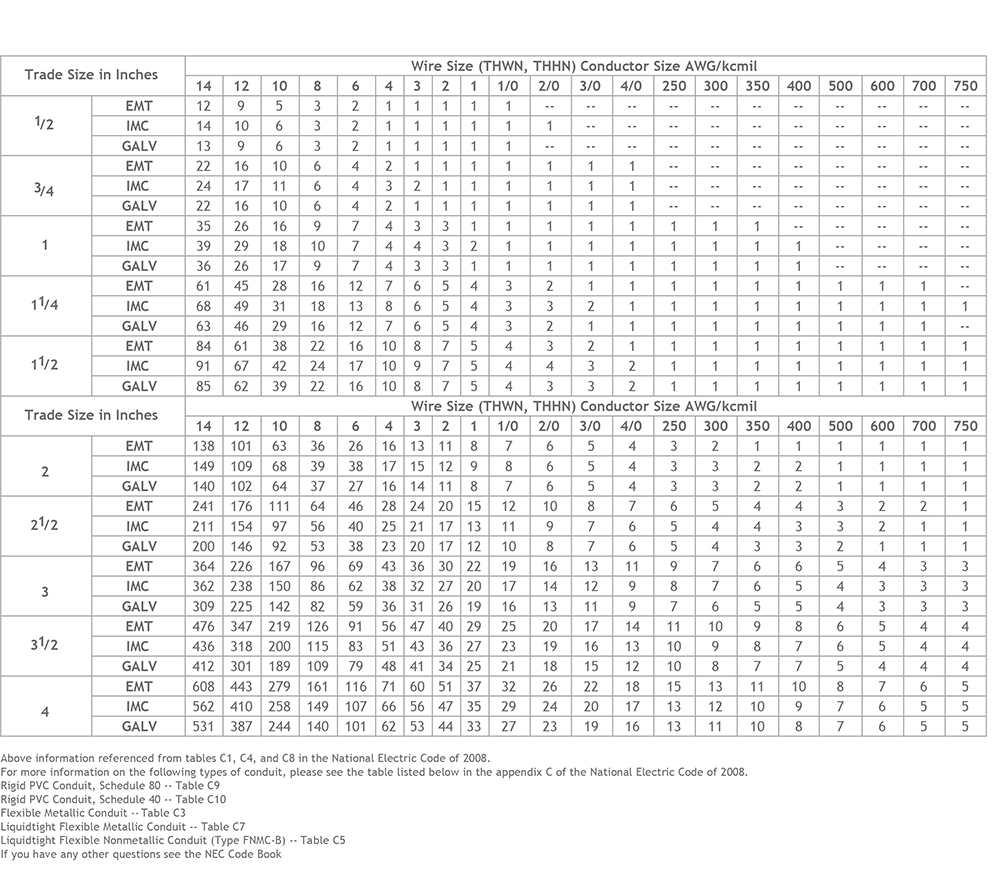
Conduit fill is an essential aspect of electrical installations, ensuring safety and efficiency by determining the maximum number of conductors that can be safely installed within a conduit. Among the various factors to consider in electrical work, conduit fill plays a significant role in determining the integrity and functionality of the electrical system. In this blog, we’ll delve into the concept of conduit fill and explore the T.D. Stevens Electrical conduit fill chart to better understand its importance and application.
What is Conduit Fill? Conduit fill refers to the amount of available space within a conduit that can accommodate electrical conductors. It is typically expressed as a percentage, representing the ratio of the cross-sectional area occupied by conductors to the total cross-sectional area of the conduit. Proper conduit fill ensures that conductors are not overcrowded, preventing overheating, voltage drop, and potential damage to the insulation.
Understanding the T.D. Stevens Electrical Conduit Fill Chart: The T.D. Stevens Electrical conduit fill chart is a widely used reference tool in the electrical industry, providing guidelines for determining conduit fill capacities based on various factors such as conduit size, conductor size, and insulation type. This chart serves as a valuable resource for electricians and electrical engineers when planning and designing electrical installations.
Key Components of the Conduit Fill Chart:
Conduit Size: The chart typically lists various conduit sizes, ranging from small diameters to larger ones, corresponding to different applications and electrical load requirements.
Conductor Size: It includes a range of conductor sizes commonly used in electrical installations, including wire gauges and cable diameters.
Insulation Type: The chart accounts for different insulation types such as THHN, THWN, and XHHW, which have varying thicknesses and properties affecting conduit fill.
Fill Percentage: The chart provides fill percentage values corresponding to different combinations of conduit size, conductor size, and insulation type, indicating the maximum allowable fill for each scenario.
Application and Importance: Proper utilization of the T.D. Stevens Electrical conduit fill chart is essential for ensuring compliance with electrical codes and standards, promoting safety, and optimizing system performance. By accurately calculating conduit fill, electricians can prevent issues such as conductor overheating, excessive voltage drop, and conduit damage, thereby enhancing the reliability and longevity of electrical installations.
Conduit fill is a critical factor in electrical design and installation, influencing the efficiency, safety, and performance of electrical systems. The T.D. Stevens Electrical conduit fill chart serves as a valuable tool for electricians and engineers, providing essential guidance for determining conduit fill capacities based on conduit size, conductor size, and insulation type. By adhering to the recommendations outlined in the conduit fill chart, professionals can ensure compliant and reliable electrical installations, safeguarding both property and occupants against potential hazards.
